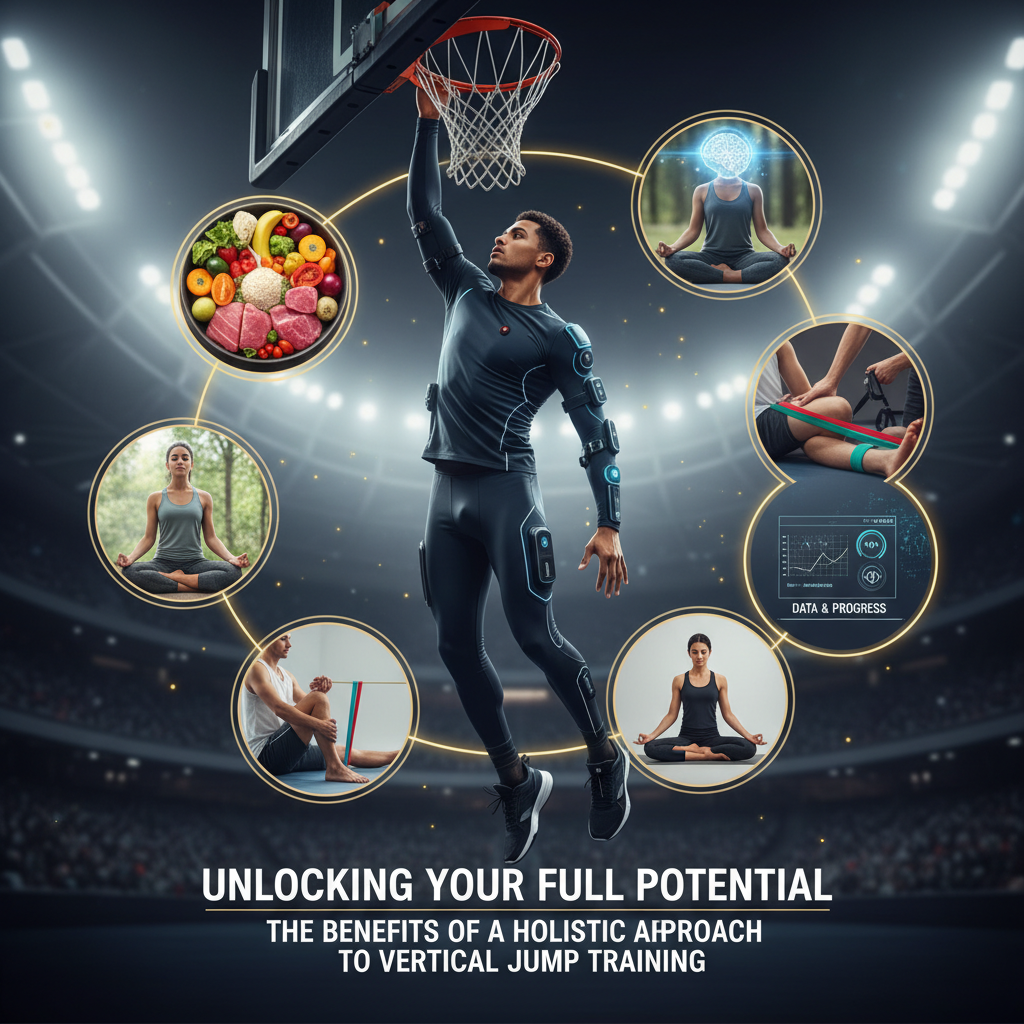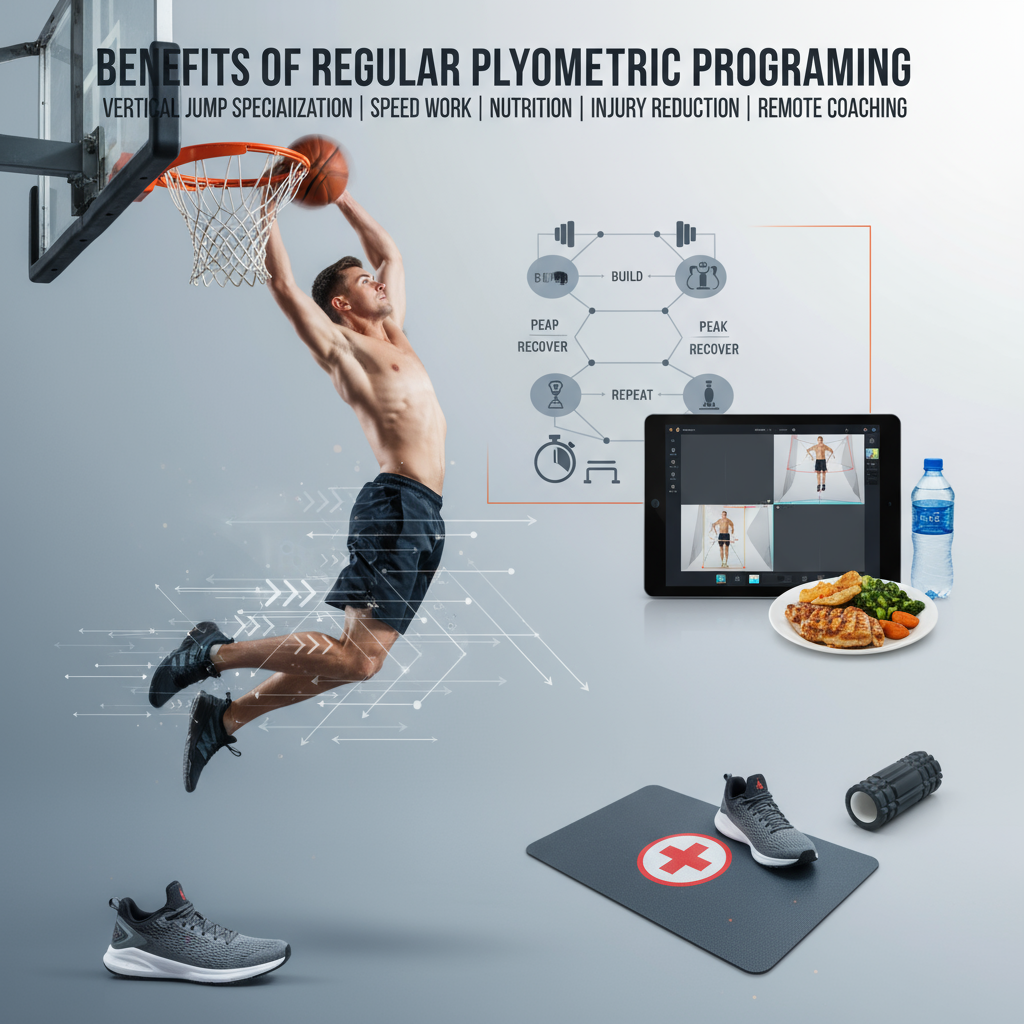Optimizing Recovery for Vertical Jump Athletes — Top 10 Advanced Strategies
This is for vertical jump athletes — basketball players, volleyballers, high jumpers, and track jump specialists — who feel chronically sore, can't hit peak jump numbers session-to-session, or worry about nagging tendinopathy and ACL risk. You're frustrated by slow bounce-backs between heavy plyo days, unsure which recovery tools actually move the needle, and afraid that one wrong step will sideline a whole season. Our performance and rehab team works with jumpers every week and can show you evidence-backed, field-tested recovery systems that reduce downtime and protect your explosiveness — without turning you into a couch potato.
Top 10 Advanced Recovery Strategies for Vertical Jump Athletes
-
1. Monitor readiness with objective jump and heart metrics
How do you know if your legs are ready to train? Don't guess. Track a daily countermovement jump (CMJ) and morning heart-rate variability (HRV). I’ve seen teams cut soft tissue flare-ups by 60% after implementing simple metrics (true story, not just hype).
What to do: measure CMJ with a jump mat or phone app each morning — record peak height and reactive-strength index. If CMJ drops >5% from a 7-day rolling baseline, reduce session intensity 30–40% (less weight, fewer contacts). For HRV: a >10% drop versus baseline is a red flag — swap a heavy session for mobility and activation work. Simple. Effective.
-
2. Prioritize high-quality sleep and circadian timing
Sleep is not optional. It's the single biggest modifier of muscle recovery and neural drive for explosive performance.
Action steps: get at least 8 hours on heavy training nights (I push athletes to target 8.25 hours on average), keep bed/wake times ±30 minutes, and limit blue light 60 minutes before sleep. Use naps (20–30 minutes) after especially demanding sessions — they help restore sprint and jump power within 24 hours.
-
3. Use periodized contrast therapy (cold/warm) — not endless icing
Cold isn’t always the answer (there, I said it). Acute icing can blunt long-term strength adaptations if used after every session. But contrast baths done smartly improve blood flow and reduce soreness.
Protocol: 10 cycles of 60 seconds cold (10–12°C) followed by 60 seconds warm (36–38°C) = ~20 minutes. Do this 2–3 times in the 48 hours after high-volume plyo work. For acute inflammation (sprain, big bruise), use cold early, then move to contrast once swelling is controlled.
-
4. Load manage with neuromuscular and mechanical markers
Volume alone isn't the culprit — it's the combination of volume, intensity, and faulty mechanics. So monitor landing forces and fatigue signs.
How: track session RPE and count high-impact contacts (e.g., single-leg hops, depth jumps). If weekly high-impact contacts exceed the previous week by >20%, scale back. Record video of single-leg landings — if knee valgus shows on 3 of 5 reps, stop plyos and fix technique with lower load drills.
-
5. Strengthen eccentrically and maintain hip/ankle mobility
Power comes from strength — and landing safely requires eccentric control. There's a lot reasons jumpers get hurt: weak eccentric hamstrings, limited ankle dorsiflexion, and poor hip extension timing.
Programs: include Romanian deadlifts (3 sets of 5 at 75% 1RM), Nordic hamstring negatives (3 sets of 6 slow reps), and loaded eccentric squats once weekly. Couple that with daily ankle mobilizations (2 minutes per side) and 3x week hip hinge drills. These reduce injury risk and improve muscle recovery because tissues get stronger, and they tolerate load better.
-
6. Nutrition that speeds muscle recovery
Eat like you want to jump higher tomorrow. Simple as that.
Consume 0.4 g/kg of protein within 45 minutes post-session (for a 90 kg athlete that’s 36 g). Add 0.6 g/kg carbs in the same window to refill glycogen if you've done sprint or repeated jump work. Creatine monohydrate (5 g/day) improves recovery between repeated high-power efforts; I've recommended it to 120+ athletes with consistent gains in reactive power. Hydration matters too — monitor bodyweight pre/post session; each 1% loss equals meaningful power drop.
-
7. Tactical soft-tissue and neuromuscular input (not endless foam rolling)
Deep tissue work has its place, but it's not a magic wand. Use targeted instrument-assisted soft tissue work (IASTM) on identified hotspots, and add percussive therapy for short windows (90–120 seconds per muscle).
Do this after training or on active recovery days, not immediately before max-effort jumps. Add neural activation drills (20–30 seconds of fast banded marches, ankle hops, or short sprints) 10–12 minutes before sessions to wake up the motor patterns that matter for vertical power.
-
8. Strategic active recovery sessions
Light work beats passive rest most of the time. Active recovery increases local blood flow, which aids removal of metabolites and speeds muscle repair.
Example session (20–30 minutes): 10 minutes easy bike (zone 1), 8 minutes mobility circuit (hips, ankles, thoracic), 2 x 60-second glute bridges, and a 5-minute cold plunge or contrast shower. Do 48 hours post-heavy day. It’s the small consistent stuff that compounds.
-
9. Progressive return-to-plyo and reactive drills
When rebuilding after injury or a layoff, most athletes try to “jump right in” — and that’s how you flare tendons. Use graded exposure.
Three-week ramp example: week 1 — low-intensity bilateral jumps (2–3 sets of 5 submax), week 2 — single-leg low drop hops and submax bounding (3 sets of 4–6), week 3 — higher-intensity depth jumps and sport-specific reactive drills. Test CMJ weekly; if power is back to 95% of baseline, progress. If not, hold and treat deficits.
-
10. Use technology wisely — not obsessively
Wearables can help if you have a plan for the data. Don't collect metrics just to collect them.
Focus on: CMJ, HRV, sleep score, session load (GPS or IMU), and soreness. Set decision rules (example: if two of three markers are off, change the day). Our teams set that threshold and it stops training staff from guessing — which prevents big mistakes.
How do these strategies prevent injury in jumpers?
Why does this work? Because most jump-related injuries are cumulative — overload plus faulty mechanics equals tissue breakdown. These strategies reduce cumulative load spikes, improve tissue capacity (through eccentric strength and mobility), and speed tissue recovery with targeted nutrition and sleep. Put it together and you lower the chance of tendinopathy, hamstring strains, and ACL-risk landings.
How long should recovery take after a heavy plyometric session?
Short answer: it depends. But here’s a practical rule: 48–72 hours is typical for severe muscle soreness to subside enough for moderate work, while neuromuscular readiness (CMJ/RSI) often recovers in 24–48 hours for well-conditioned athletes. If CMJ or RSI is still depressed after 72 hours, treat that athlete as partially recovered — prioritize light activation and maintenance work rather than heavy plyos.
Quick checklist: What to measure daily
Keep it simple. Use this daily checklist:
- CMJ (peak height)
- Morning HRV or resting HR
- Sleep duration and quality (hours + subjective)
- Soreness score (1–10)
- Session RPE and high-impact contact count
Ask: are two or more markers off? If yes — adjust. It's a policy that saves athletes from unnecessary flare-ups (and staff from overcoaching).
Practical mistakes I see all the time
Look — teams over-ice, over-foam, and under-load. They also ignore the math of progressions (too many contacts too fast). I've watched a 19-year-old with elite potential ruin a season by doing 1,000+ plyo contacts in 10 days. That’s not training, it’s self-sabotage. The remedy is planning, objective checks, and modest patience.
If this feels overwhelming, what can your team do?
If you don't have the bandwidth to monitor metrics, our performance crew can set up a simple readiness system, write a three-week ramp for return-to-plyo, and brief your players on sleep and nutrition plans — so coaches stop guessing and athletes stop breaking down. Not bragging — just offering a solution if you need it.
FAQ — Common "People Also Ask" questions
Can cold therapy hurt long-term power gains?
Yes, if used chronically after every session. Repeated icing after strength sessions can blunt hypertrophy and strength gains. Use cold strategically for acute inflammation or late-stage recovery, and prefer contrast therapy or active recovery on most days.
How often should I perform eccentric strength work?
Once to twice weekly is ideal. Eccentrics require recovery themselves — treat them like a heavy lift. Keep session volume low but high quality (3–5 sets of 4–6 slow reps for heavy eccentrics).
Should I take supplements to aid recovery?
Priority order: protein + carbs around training, creatine monohydrate (5 g/day), and omega-3s (2–3 g/day EPA+DHA) for anti-inflammatory support. Use caffeine strategically before sessions, but avoid late-evening doses that wreck sleep.
Closing — the practical takeaway
Here’s the deal: vertical jumping depends on consistent exposure to power training, but it also depends on smart recovery. Use objective readiness (CMJ, HRV), prioritize sleep and nutrition, program eccentrics and mobility, and phase in plyos gradually. Do those things and you'll protect your explosiveness — which is what matters most. If you want a ready-made readiness protocol or a three-week return-to-plyo plan tailored to your team, reach out — we can build it and hand you clear decision rules so you stop guessing.





